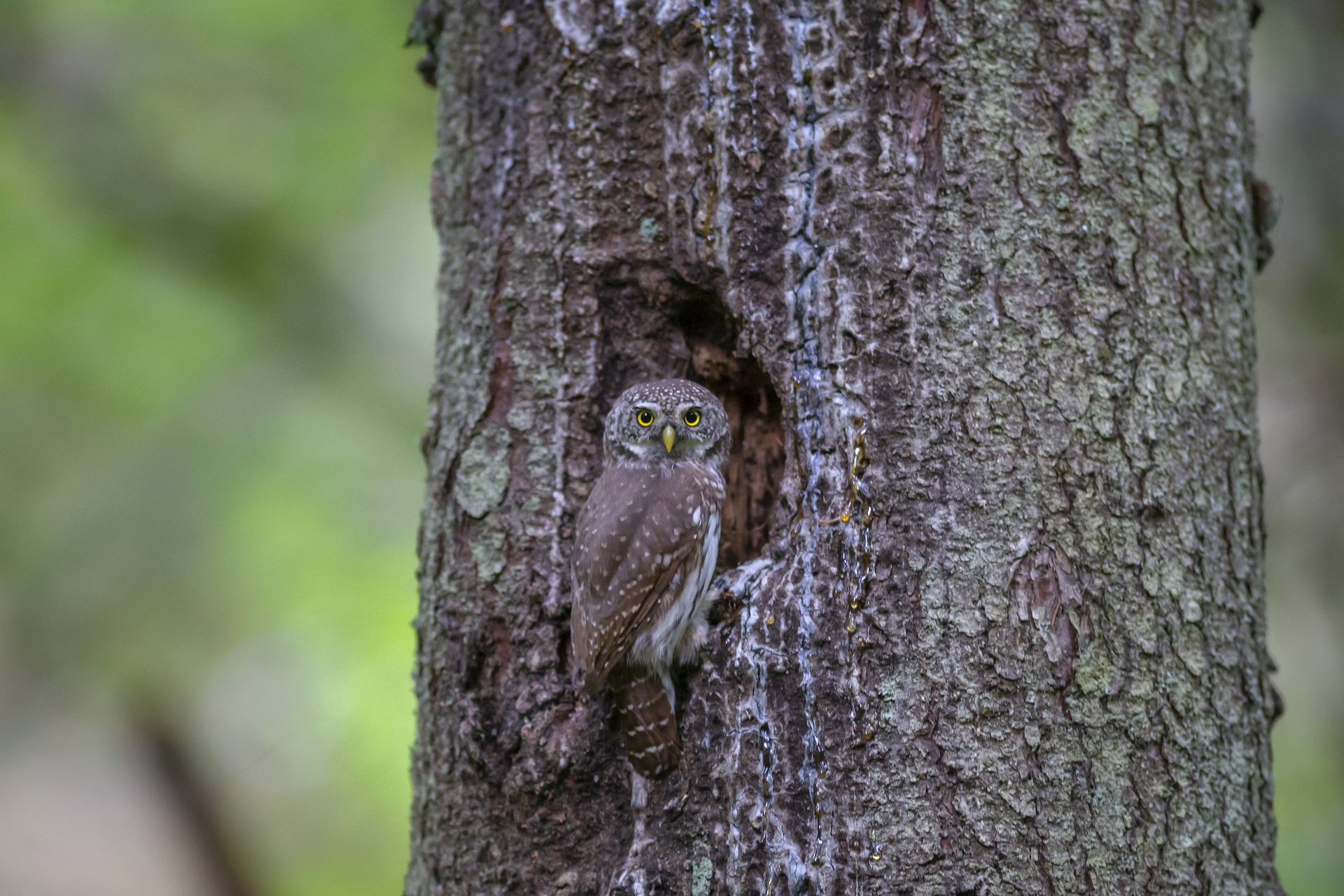The Eurasian Pygmy Owl (Glaucidium passerinum) is a small owl species native to Europe and parts of Asia. Here’s some information about this fascinating bird:
- Appearance: The Eurasian Pygmy Owl is one of the smallest owl species in Europe, measuring around 16 to 18 centimeters (6.3 to 7.1 inches) in length. It has a compact body with a rounded head, large yellow eyes, and relatively short ear tufts. The plumage varies in coloration but often includes shades of brown, grey, and white, providing effective camouflage in its woodland habitat.
- Habitat: These owls are typically found in dense coniferous and mixed forests, although they can also inhabit deciduous woodlands, scrublands, and mountainous regions. They prefer habitats with a mix of trees and open spaces, where they can hunt for prey and find suitable nesting sites.
- Distribution: The Eurasian Pygmy Owl has a wide distribution across Europe and Asia, ranging from Scandinavia in the west to Japan in the east. They are found in countries such as Russia, Finland, Sweden, Norway, Estonia, Latvia, Lithuania, Poland, Germany, and parts of central Asia.
- Hunting and Diet: Eurasian Pygmy Owls are primarily crepuscular or nocturnal hunters, meaning they are most active during dawn, dusk, and nighttime. They feed on a variety of small prey, including birds, mammals, insects, and occasionally amphibians and reptiles. Despite their small size, they are skilled hunters and can take down prey larger than themselves.
- Nesting and Reproduction: Breeding season for Eurasian Pygmy Owls typically occurs in spring, with pairs forming monogamous bonds. They nest in tree cavities, old woodpecker holes, or abandoned nests of other birds. The female lays a clutch of eggs, usually ranging from 3 to 7 eggs, which she incubates while the male brings food to the nest. After hatching, both parents participate in feeding and caring for the young until they fledge.
- Conservation: Eurasian Pygmy Owls are not considered globally threatened, although populations may be declining in some regions due to habitat loss, fragmentation, and degradation. Conservation efforts aimed at preserving mature forests, protecting nesting sites, and minimizing disturbance to owl populations are important for their long-term survival.
Overall, the Eurasian Pygmy Owl is a fascinating and elusive bird species appreciated by birdwatchers and nature enthusiasts for its unique characteristics and role in forest ecosystems.
Views: 15
Subscribe to the newsletter:
